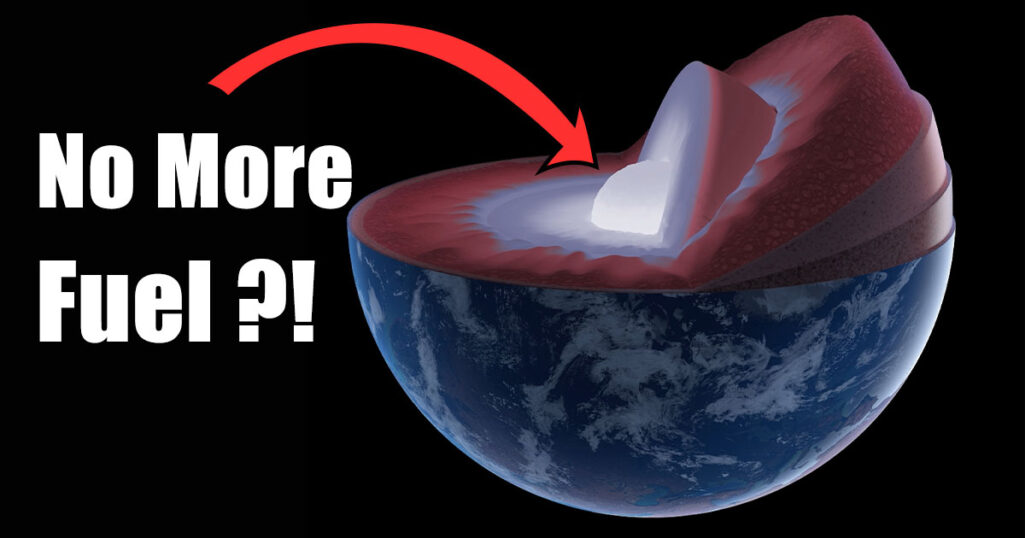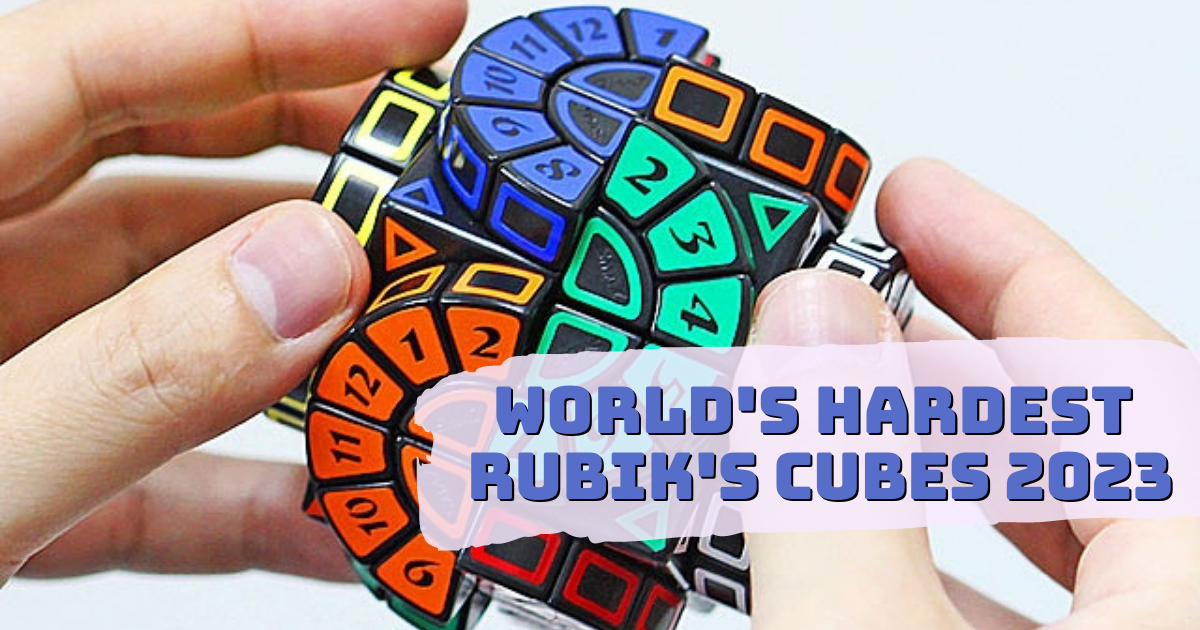
The Earth’s crust contains a large number of minerals. However, if we were to rank them according to their hardness, some minerals would be much harder than others. There are a few methods that can be used to determine how tough they are, like the Brinell scale and Vickers hardness test. However, the Mohs’ Hardness Scale is the most widely used and reliable method.
What is Mohs’ Scale of Hardness?
The relative hardness of various minerals and other things can be assessed using the Mohs Hardness Scale, which consists of ten reference minerals (numbered 1 through 10). An element’s “resistance to being scratched” is how this test characterizes a mineral’s hardness.

How to Use the Mohs’ Scale
When doing the Mohs’ hardness test, set the unknown item down on a tabletop and firmly hold it with one hand. Place a reference specimen point next to an unknown specimen’s flat, unmarked surface. Intentionally drag the reference specimen across the flat surface while applying forceful pressure to the unknown.
Drag the known specimen away from your body and parallel to the fingers holding the unknown specimen to prevent harm.
For example, if mineral #5 can scratch a mineral specimen of unknown hardness, then the specimen’s hardness is less than or equal to a Mohs’ hardness of 5. Similarly, if reference mineral #5 cannot scratch your specimen, your specimen has a Mohs hardness greater than or equal to 5.
Although the Mohs scale is not exact and is strictly ordinal, it is nonetheless valuable for geology since it may be used to determine the hardness of different minerals. It functions by evaluating how easily one substance can scratch a softer material. Electronic manufacturers frequently use this scale to evaluate the robustness of flat panel display modules.
According to Mohs’ hardness, the following is our ranking of the world’s hardest minerals.
12. Lonsdaleite – 7-8 Mohs
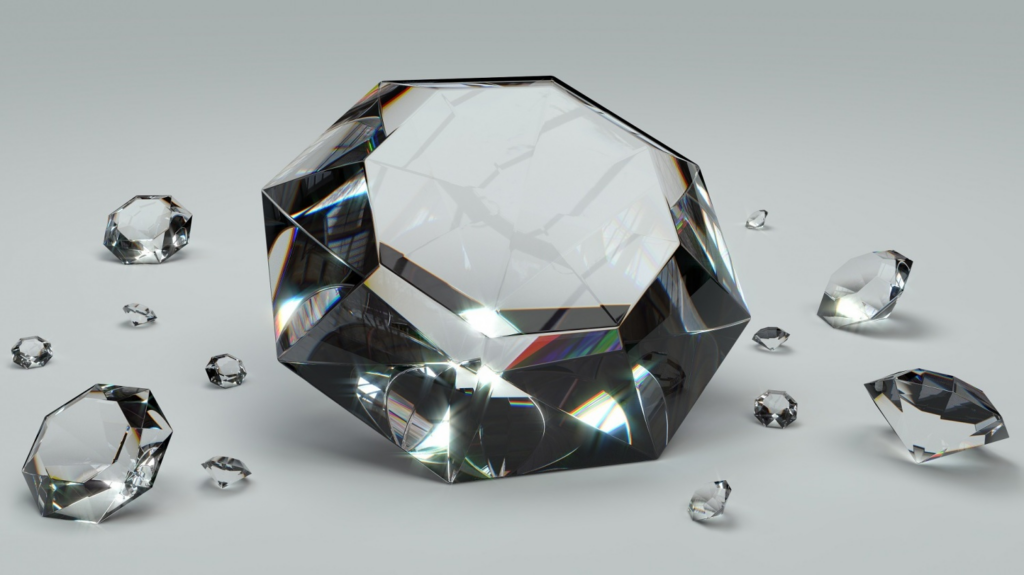
Lonsdaleite, commonly called the hexagonal diamond, is a rare allotrope of carbon (like graphite and diamond) exclusively discovered in natural meteorite debris.
The Barringer Crater in Arizona, United States, was formed by the asteroid Canyon Diablo meteorite, where Lonsdaleite was first found in 1967. The mineral lonsdaleite was named after Kathleen Lonsdale, the first female fellow of the Royal Society and an early innovator in crystallography from the United Kingdom. The crystal looks like a diamond from Earth, but its hexagonal crystalline structure sets it apart. The crystal structure of diamonds is typically cubic.
The majority of Lonsdaleite found in nature have a lower hardness than diamonds. The material’s impurities most likely cause this. Lonsdaleite without impurities is significantly harder than any diamond discovered on Earth.
11. Topaz – 8 Mohs

It ranks 8 on the Mohs’ hardness scale, making it more durable than tanzanite and nearly as hard as sapphire. Topaz can be fragile like all crystals and needs to be handled carefully.
It can be found in many places worldwide when rhyolite and pegmatite are created. The state of Minas Gerais in southeast Brazil is where the majority of fine-quality imperial Topaz is produced.
The primary purpose of topaz production is as a gemstone for jewelry and decorations. The raw material topaz can be used to create refractory materials. These materials can be utilized in furnaces, kilns, incinerators, and reactors because they maintain their strength at high temperatures.
Fun Fact: In ancient times, Topaz was thought to treat inflammation, stop sleepwalking, and enhance vision. It was also said that the stone changed color when it was near poisoned food or drink. Both healers and doctors utilized it in a variety of medical procedures.
10. Chromium – 8.5 Mohs

Chromium can exist in various chemical forms and can be found as a liquid, solid, or gas. The three most prevalent forms of chromium, also known as hexavalent chromium, are chromium(0), chromium(III), and chromium(VI). Chromium compounds don’t have a distinct flavor or smell.
Chromium is extremely hard and has a very high melting point. It can take a high polish and prevent tarnishing but is fragile and glossy. Over 2,000 years ago, the Chinese utilized it for the first time as a coating for the metal weapons discovered with the Terracotta Army during the Qin dynasty.
Steel is hardened using chromium, which is also used to make stainless steel (named because it won’t rust), and several alloys. Steel can be given a polished mirror finish via chromium plating. Bumpers and other automotive and truck parts with chromium plating were previously quite popular.
9. Cubic Zirconia – 8.5 Mohs
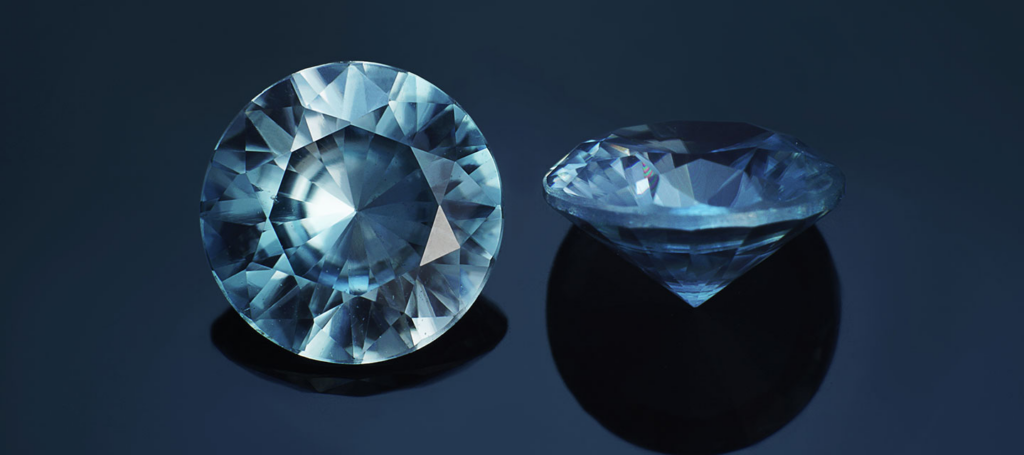
German mineralogists K. Chudoba and M.V. Stackelberg made the initial finding of a naturally occurring cubic zirconia in 1937. The gemstone was ignored for many years before being unearthed by Soviet experts. It was believed that the stone might serve as a durable, diamond-like material. There were rumors that it would be used in lasers instead of rubies.
In the jewelry industry today, cubic zirconia is created in large quantities. Since cubic zirconia rarely occurs in nature, it must be produced or synthesized by humans for usage in jewelry.
Fun Fact: Every gemstone has beliefs attached to it, whether they are spiritual, mental, or physical. Many people think cubic zirconia can balance a wearer’s physical and emotional well-being. It is also believed that wearing this stone may help the bearer establish a connection to angelic realms.
8. Chrysoberyl – 8.5 Mohs

This natural gemstone’s trillings, or cyclic twins, are fascinating. The twinned crystals resemble hexagons and are typically greenish-yellow in color, though they can also be other tones of green, brown, yellow, and other colors.
All the uses of Chrysoberyl are mainly spiritual. Chrysoberyl is believed to be a powerful talisman that has been utilized to ward off misfortune since the dawn of humanity. Negative ideas are changed into positive energy by Chrysoberyl. It builds self-worth and boosts self-confidence. Chrysoberyl aids in allowing you to view a scenario or problem from all angles.
It has been utilized by metaphysical healers to treat numerous heart and liver conditions, muscle weakness, nerve tension, and even paralysis.
7. Tungsten Carbide – 9 Mohs

A tungsten and carbon compound known for its outstanding durability and high melting point (2,870°C) is known as tungsten carbide. It is frequently used in products like abrasives, cutters, dies, and punches that need exceptional wear or impact resistance.
Extremely hard tungsten carbide is used in jewelry making, among other things. Even though tungsten carbide actually has an equal amount of tungsten and carbon, it is frequently wrongly referred to as “tungsten” when used in jewelry. Due to its extraordinary hardness and scratch resistance, it has become so well-liked in the jewelry business.
The most abrasion-resistant metal known to man is tungsten carbide. Jewelry made of tungsten carbide is comparable in price to gold and platinum and has a wonderful weight. In a medical emergency, tungsten rings are quicker and simpler to remove from your finger than gold.
6. Corundum – 9 Mohs
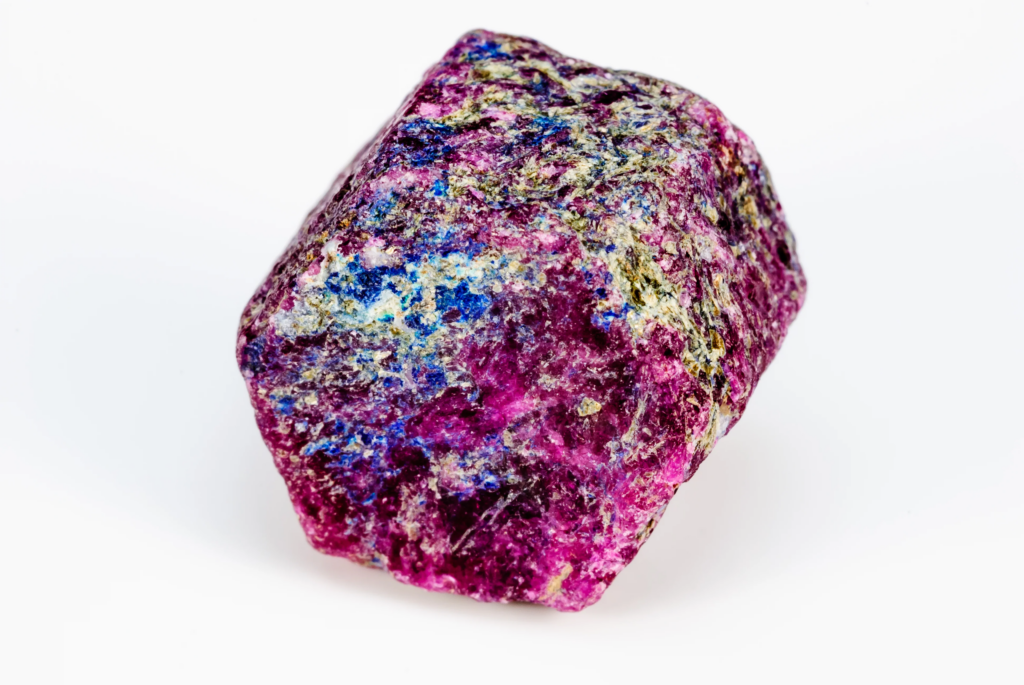
One of the most common minerals that make up the Earth’s crust is corundum. Corundum is a naturally occurring mineral that forms transparent, clear rocks. It is an aluminum oxide with iron, titanium, and chromium traces.
Your favorite valuable gemstones, such as ravishing red rubies and brilliant blue sapphires, are made of this mineral, which is magnetic and complex in composition.
It is used to polish metals and grind optical glass, and it may also be produced into sandpaper and grinding wheels. It’s been utilized in refractories due to its high melting point (2,040° C or 3,700° F). It can scratch practically all other minerals due to its extreme hardness. It is frequently used as an abrasive.
5. Titanium Carbide – 9-9.5 Mohs

TiC is typically made by blending high-purity titanium dioxide with carbon black at temperatures between 1700 and 2100 °C. Titanium carbide is frequently used to cover timepieces, in tool bits, and occasionally as a heat shield for spacecraft to enable atmospheric re-entry.
Titanium carbide is not only durable and light, but it also naturally resists corroding. When first exposed to oxygen, it forms a thin coating of oxide that serves as a barrier against further corrosion of the metal.
4. Moissanite – 9.25 Mohs

Due to scarcity, Moissanite wasn’t introduced to the jewelry industry until 1998. It is frequently sought after as a diamond substitute since it is remarkably comparable to diamonds but costs less.
Because of its endurance, Moissanite (silicon carbide) is a common abrasive in lapidary. Its hardness makes it ideal for abrasive machining procedures like water-jet cutting, sandblasting, grinding, and honing in the manufacturing industry.
Aside from that, Moissanite is the most brilliant gem in existence. The amount of light reflected back at your eye serves as a gauge for brilliance. To put it another way, Moissanite is quantifiably more attractive than diamonds. Moissanite is more heat resistant than diamonds and has a tougher surface.
3. Stishovite – 9.5 Mohs

Stishovite is a tetragonal polymorph of silicon dioxide that is exceptionally dense and hard. Although it is extremely uncommon on the Earth’s surface, it may be the most common form of silicon dioxide inside the planet, particularly in the lower mantle.
Sergey M. Stishov, a Russian high-pressure physicist who initially created the mineral in 1961, received the name “Stishovite” in honor of him. Edward C. T. Chao found it at Meteor Crater in 1962.
These polymorphs are typically found in high-pressure crystalline rocks like kimberlites, which are diamond-bearing rocks that may contain coesite, and meteor impact craters, which may contain stishovite.
2. Boron – 9.5 Mohs

This chemical element is created by a process known as cosmic ray spallation, a form of nuclear fission that happens naturally. Its naturally occurring compounds are more prevalent than boron in its purest form. Boron compounds are employed for several reasons, such as providing thermal shock resistance in silica-based glasses, bleaches, and fiberglass insulation.
Boron is employed in nuclear reactors, as a semiconductor, in special-purpose alloys, in cementing iron, as an oxygen scavenger for copper and other metals, as fibers and filaments in composite materials with metals or ceramics, and in devices for detecting neutrons.
1. Diamond – 10 Mohs

Diamonds are valued for a variety of reasons, including their durability. Diamonds are the least likely to alter through time because they are the hardest mineral on Earth. They develop far below the Earth’s surface at extremely high pressure. At a depth of 100 miles below the surface of the Earth, when temperatures (and pressure) are incredibly high, most gem-quality diamonds are formed.
It is crucial to understand that even diamonds with the highest Mohs’ hardness can be scratched by other diamonds, proving that they are not indestructible.
Although diamonds come in every color of the rainbow, D-to-Z color diamonds are the most often used ones in jewelry. Blue, green, orange, and red natural-colored diamonds are the rarest; yellow and brown are the most prevalent.
Special Mention – Buckypaper
Imagine a substance that is one-tenth the weight of steel, at least 250 times stronger. The substance in question is known as “Buckypaper,” and it initially came to the attention of scientists in the early 2000s.

Between 25 to 72 micrometers thick, carbon nanotubes—which make up Buckypaper—are 50,000 times thinner than our hair. A carbon nanotube (CNT) is essentially a nanometer-diameter cylindrical tube formed of graphene. It is a carbon allotrope.
Buckypaper is 250 times harder than steel and twice as hard as diamond, thanks to its strong atomic bonding (regular steel has a Mohs’ hardness range of 4-4.5).
In Conclusion
Different kinds of minerals disintegrate in different ways. Keep in mind that crystals make up all minerals. This indicates that a mineral’s atoms are set up in a repeating pattern; how a mineral breaks is determined by this pattern.
Diamond is the hardest known mineral and has maintained that position throughout mineral exploration history. There are other minerals that, while not as hard as diamond, are quite sturdy.


